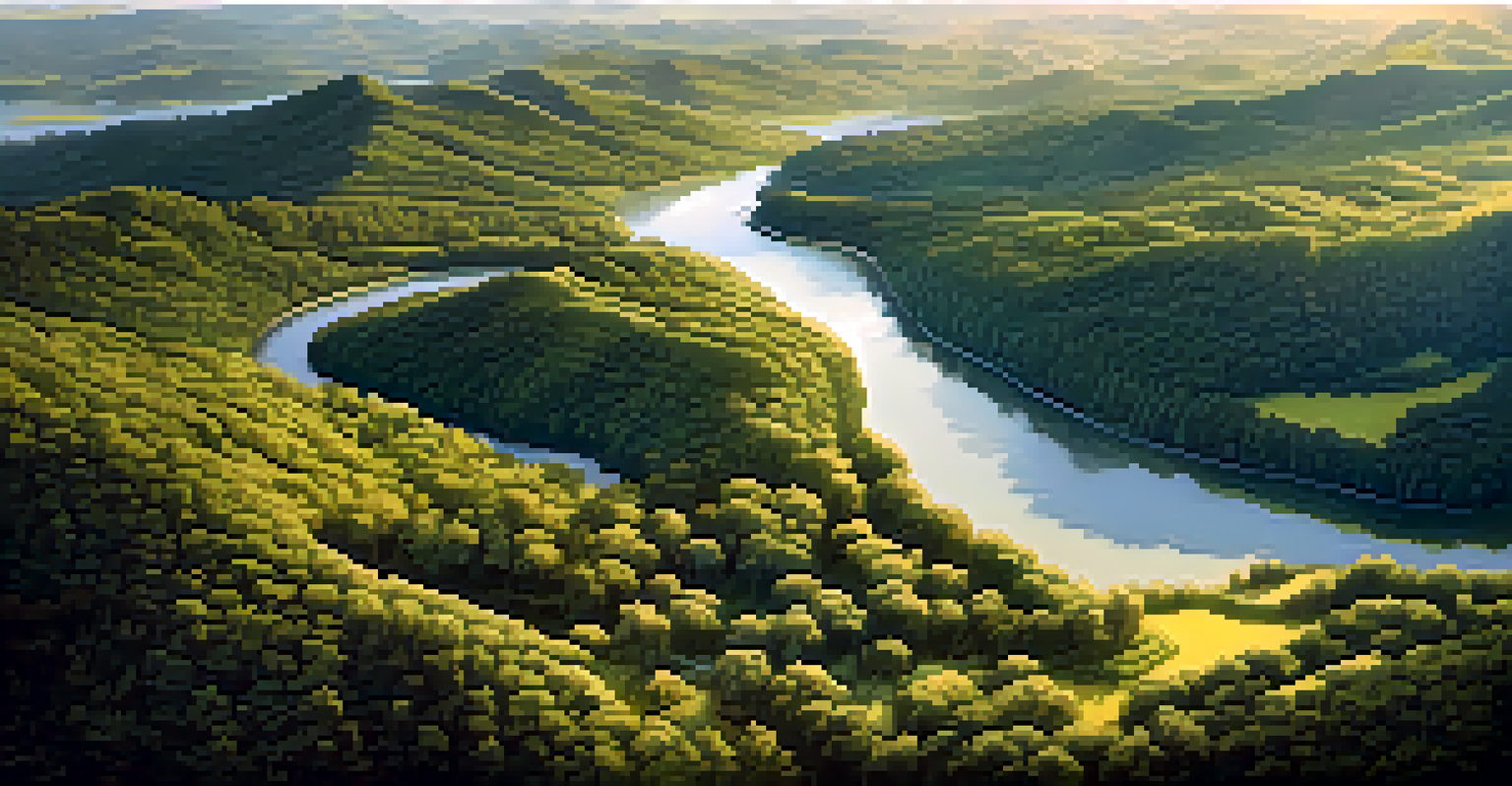Indigenous Perspectives in Films About Environmentalism

Understanding Indigenous Perspectives in Environmentalism
Indigenous perspectives offer a rich tapestry of wisdom when it comes to environmentalism. These viewpoints often stem from a deep-rooted connection to the land, informed by centuries of tradition and stewardship. This connection contrasts sharply with more modern, industrial approaches that can sometimes lead to environmental degradation.
We do not inherit the earth from our ancestors; we borrow it from our children.
By incorporating Indigenous narratives, films can convey a holistic understanding of nature, emphasizing the interdependence of all living things. This is crucial, especially in a world increasingly faced with climate change and ecological crises. The stories told through films can serve to enlighten audiences about sustainable practices rooted in Indigenous knowledge.
Ultimately, these perspectives challenge viewers to rethink their relationship with nature. They encourage a shift from exploitation to reverence, pushing for a more sustainable and respectful approach to environmentalism.
The Role of Storytelling in Indigenous Cultures
Storytelling is a vital aspect of Indigenous cultures and serves as a powerful tool for environmental advocacy. These narratives often encapsulate lessons about the land, its spirits, and the importance of caring for nature. In films, this storytelling tradition can be used to connect with audiences on a personal level, weaving emotional threads that resonate deeply.

For example, films that feature Indigenous storytellers often highlight the consequences of environmental neglect, making the issue relatable and urgent. This emotional engagement can inspire action, motivating viewers to adopt more sustainable practices in their daily lives. By sharing these stories, filmmakers can amplify Indigenous voices and foster greater awareness.
Indigenous Wisdom Enhances Environmentalism
Incorporating Indigenous perspectives into environmental narratives fosters a more sustainable and respectful relationship with nature.
Moreover, storytelling in Indigenous cultures often includes elements of humor and resilience, which can make the subject matter more accessible. This blend of gravity and levity encourages audiences to reflect on their own roles in environmental stewardship.
Highlighting Key Films with Indigenous Themes
Several films have successfully highlighted Indigenous perspectives in environmentalism, showcasing the unique relationship these cultures have with the land. For instance, documentaries like 'Before the Flood' include Indigenous voices discussing the impacts of climate change on their communities. These real-life accounts lend authenticity and urgency to the narrative.
The land is not just a resource; it is a living entity with which we are in relationship.
Another notable film is 'The Last Guardians,' which showcases the struggles faced by Indigenous people in protecting their ancestral lands. These stories not only educate viewers but also challenge the dominant narratives often found in mainstream media. By focusing on Indigenous experiences, filmmakers can shed light on the often-overlooked impacts of environmental issues.
These films serve as a reminder of the importance of representation in media. When Indigenous stories are told authentically, they can inspire a deeper understanding of environmentalism that transcends cultural boundaries.
Challenges Facing Indigenous Representation in Film
Despite the growing number of films focusing on Indigenous perspectives, challenges remain in their representation. One major issue is the risk of misrepresentation or superficial portrayals that fail to capture the complexity of Indigenous cultures. This can lead to stereotypes that undermine the very messages these films aim to convey.
Moreover, many films about environmentalism are still primarily produced by non-Indigenous filmmakers, which can lead to a lack of authenticity. It's essential for Indigenous voices to be at the forefront, guiding the narrative rather than being secondary characters in a larger story. This ensures that the cultural nuances and significance of their relationship with the environment are respected.
Storytelling Connects Audiences Emotionally
Indigenous storytelling in films effectively engages viewers, making environmental issues relatable and inspiring action.
Navigating these challenges requires collaboration and partnership between Indigenous creators and the film industry. By fostering these relationships, filmmakers can create more accurate and impactful representations of Indigenous perspectives.
The Impact of Indigenous Perspectives on Mainstream Audiences
Indigenous perspectives can profoundly influence mainstream audiences, shifting the way people view environmental issues. Films that effectively showcase these viewpoints often resonate with viewers, sparking conversations about sustainability and responsibility. This engagement can lead to increased awareness and a desire for change.
For instance, when audiences see the direct impact of environmental degradation on Indigenous communities, it humanizes the issue. It becomes not just an abstract concept, but a reality that affects real people. This emotional connection often drives viewers to become advocates for environmental justice.
Furthermore, these films can encourage audiences to explore Indigenous practices and philosophies, fostering a greater appreciation for diverse perspectives on nature. This can result in a broader movement towards environmental stewardship that is inclusive and informed.
The Future of Indigenous Representation in Environmental Films
Looking ahead, the future of Indigenous representation in environmental films appears promising, with a growing number of Indigenous filmmakers gaining recognition. This shift is crucial for ensuring that Indigenous voices are authentically represented in narratives about environmentalism. As more Indigenous creators enter the industry, we can expect a richer and more nuanced portrayal of their perspectives.
Additionally, the increasing global awareness of climate issues has created a fertile ground for these stories to flourish. As audiences demand more diverse narratives, filmmakers have the opportunity to spotlight Indigenous wisdom and practices that promote sustainability. This could lead to a more inclusive dialogue around environmentalism.
Authenticity is Key in Representation
Ensuring Indigenous voices lead environmental narratives is crucial for accurate representation and avoiding stereotypes.
As we embrace this shift, it’s essential for both filmmakers and audiences to remain open to learning from Indigenous cultures. By doing so, we can cultivate a deeper understanding of our interconnectedness with the environment and inspire collective action for a more sustainable future.
Conclusion: Embracing Indigenous Perspectives for a Sustainable Future
In conclusion, embracing Indigenous perspectives in films about environmentalism is not just beneficial; it’s essential for fostering a more sustainable future. These perspectives provide invaluable insights into our relationship with nature and can inspire positive change. By amplifying Indigenous voices, we can reshape conversations around environmental stewardship.
Films that highlight these narratives not only educate but also challenge viewers to reflect on their own impact on the planet. As we engage with these stories, we are reminded of the importance of respecting and learning from those who have long understood the delicate balance of our ecosystems.

Ultimately, incorporating Indigenous perspectives into environmental films can lead to a more holistic understanding of our world, encouraging a collective commitment to protecting our planet for future generations.